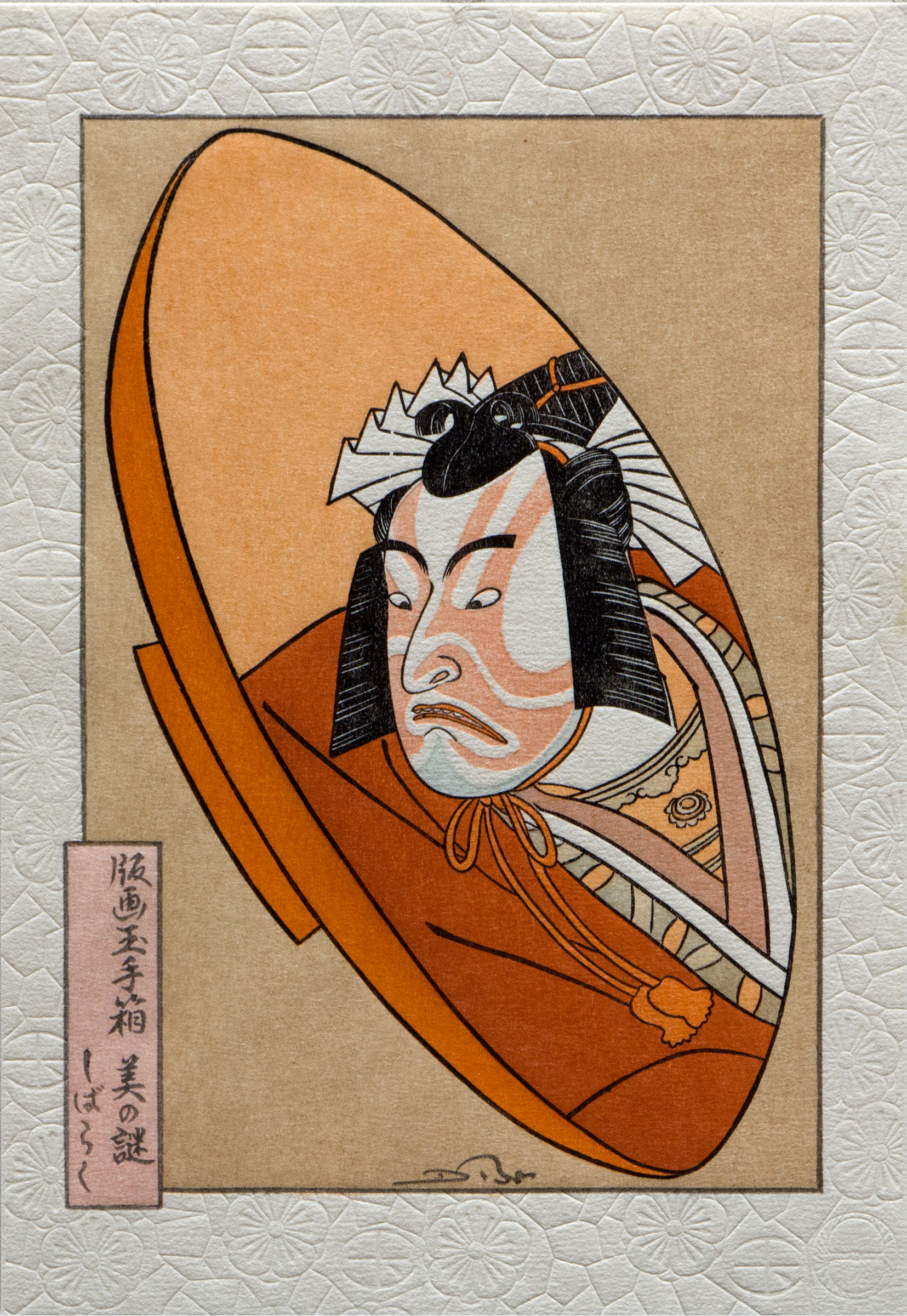Data
Description
We remain in 'classical' mode for the second print in our series - this one is an adaptation of a design attributed to Katsukawa Shunko, dating from 1787. Although there is no crest visible in the design, it is known that this depicts the actor Ichikawa Yaozo III, in the famous 'Shibaraku' role.
Shunko was noted for the okubi-e (large head pictures) which he designed, and the general feeling among scholars now is that he 'paved the way' for the astounding work that would be created by Sharaku just a few years later.
The actor is depicted here in an interesting fashion - what we see is his reflection in an o-sake cup (these wide and shallow bowls were the standard way to drink sake at that time). The presumption is that we are sitting in our theatre stall, enjoying the performance along with the occasional libation!
Drinking cups of this kind were of course made from lacquerware. The object was created by building up layer upon layer of lacquer over a wooden shape until the final effect was created, and the surface would of course be very highly polished. Unfortunately for the sake of making a good depiction of such an object in woodblock work, the surface of a normal print does not become shiny, but has a flat matte appearance. The back side though, does become polished by the burnishing action of the baren rubbing tool.
Now the craftsmen in the old days were nothing if not resourceful, and somewhere along the line, somebody came up with the idea of flipping the paper over and rubbing on the front of it to create shiny areas. This is known as sho-men-zuri (front face rubbing), and if you hold this print up to the light, you will see that the vermillion surface of the sake cup has been given this treatment.
It's actually a bit complicated to do; a block must be carved to match the area, and this has to be in 'normal' orientation, unlike the reverse orientation of the other blocks. And because this step is performed with the paper in a dry state, the block has to be carved at a slightly smaller size than the others, because the paper shrinks once dried.
But I'm glad that I decided to add this extra step!
David
Other prints in this set
-
 Mystique of the Japanese Print
Mystique of the Japanese Print
-
 Mt. Fuji from Lake Kawaguchi
Mt. Fuji from Lake Kawaguchi
-
 Kabuki Actor
Kabuki Actor
-
 Hydrangea in Rain
Hydrangea in Rain
-
 Young Girl
Young Girl
-
 Mt. Unzen
Mt. Unzen
-
 Needlework
Needlework
-
 Late Autumn
Late Autumn
-
 Japanese Lute
Japanese Lute
-
 Moon of Enlightenment
Moon of Enlightenment
-
 Winter Ferry
Winter Ferry
-
 Urashima Taro
Urashima Taro
-
 Still Life with Fugu
Still Life with Fugu
-
 Itinerant Dancer
Itinerant Dancer
-
 Meiji Patterns
Meiji Patterns
-
 Ukiyo-e Beauty
Ukiyo-e Beauty
-
 Chinese Woodblock Print
Chinese Woodblock Print
-
 Parrot and Acorns
Parrot and Acorns
-
 Mt. Fuji in a Window
Mt. Fuji in a Window


